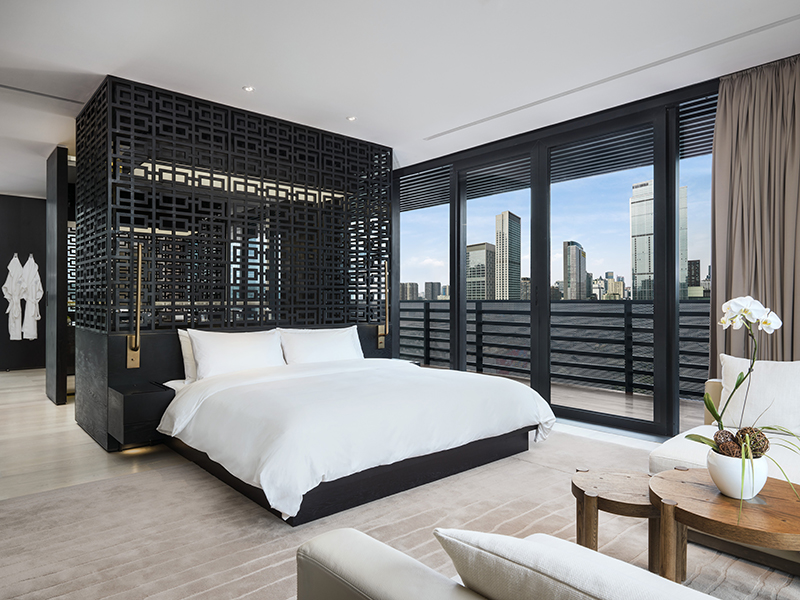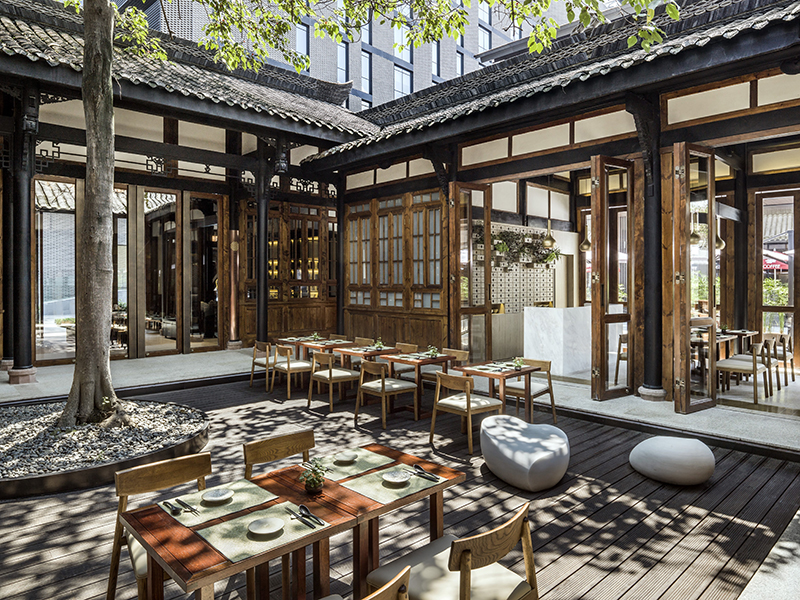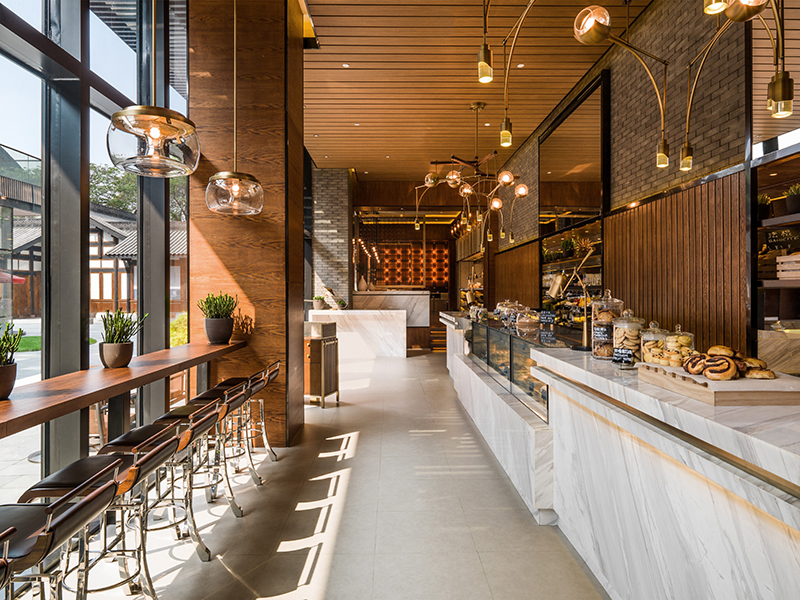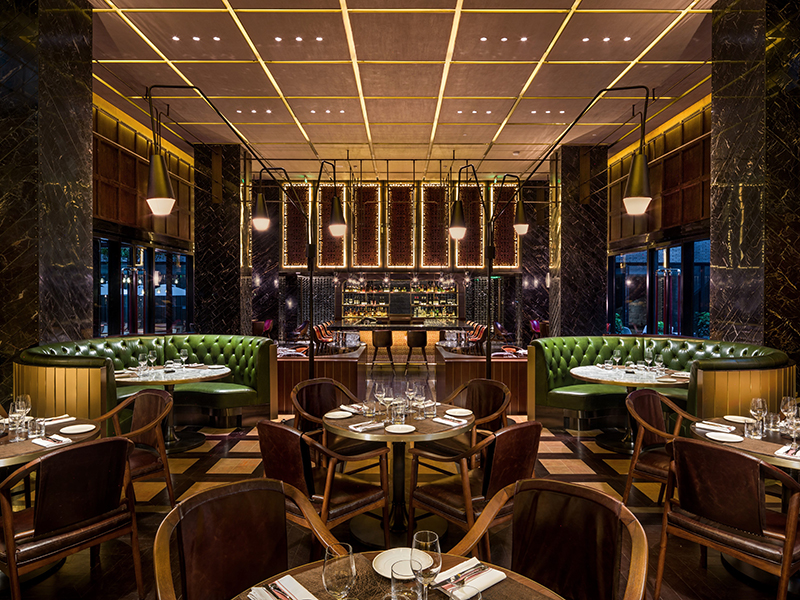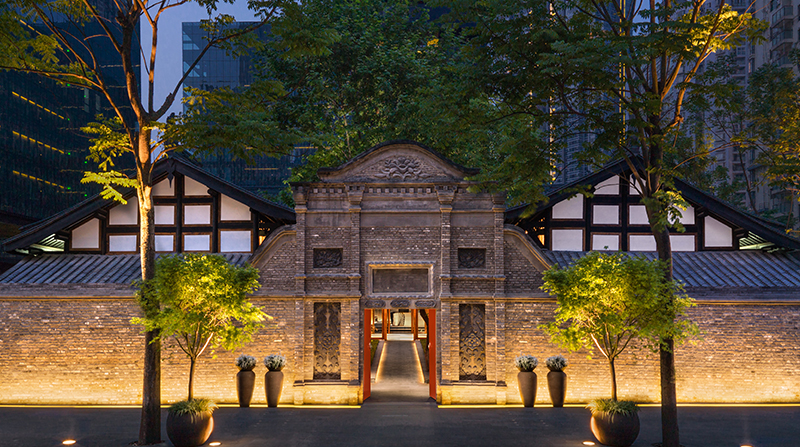
Though still relatively unknown when compared to Beijing and Shanghai, Chengdu, the capital city of the Sichuan province, is quickly catching up to become one of China’s most popular tourist destinations. Famous for its Giant Panda Research Base and its fiery foods (the birthplace of Sichuan cuisine was designated a UNESCO City of Gastronomy in 2010), Chengdu is also known for its many teahouses, striking temples and a thriving art and fashion scene.
Now easier to get to than ever before thanks to Hainan Airlines’ recently introduced direct-service route between New York’s JFK International Airport and Chengdu Shuangliu International, this city should make its way onto your list of must-visit destinations.
And when you do make the journey to this fascinating southwestern Chinese metropolis, allow this three-day itinerary to be your guide.
Day 1
Arriving just as dawn breaks over Chengdu, you will discover a modern yet spacious city. The streets here are wider and much less cramped than in Shanghai or Hong Kong. Though skyscrapers abound, it doesn’t feel frenetic or overly populated, which is astounding considering that Chengdu proper is home to more than 8 million residents, a number that jumps to 14.4 million when all the suburban areas are taken into account.
For your stay, you’ve booked one of the most luxurious and best-situated hotels in the city: The Temple House. Part of a mixed-use development built around a 2,000-year-old monastery, this unique property is within walking distance to countless shops, restaurants and historically significant sites.
You’ll be enthralled from the minute you step foot through The Temple House’s courtyard entrance, the façade of which is a beautifully restored, centuries-old Qing Dynasty heritage building. Like walking onto a Chinese period movie set, the theme of old and new is woven seamlessly into the entire guest experience, as evidenced by the foliage-lined pathway that leads from the historically preserved building to the contemporary lobby.
After checking into your room and scoping out all of its finer details — push-button blackout shades; a platform bed with silken-feeling, high thread count sheets; a rainfall shower; Bose Bluetooth-enabled speakers; a shiny Illy cappuccino maker; custom amenity kits; and more — you’ll notice that the hotel staff has thoughtfully drawn a bath for you in the large sunken tub, scenting it with fresh chrysanthemum petals. Sink into the bath and let it work its revival powers before changing into something comfortable and heading out for the day.
Spend a bit of time exploring The Temple House’s facilities so you can take advantage of everything the luxe lodging has to offer. Among the highlights is a gorgeous subterranean gym and pool; a glittering Italian restaurant, Tivano; the hotel’s sexy indoor-outdoor bar, Jing; and the all-day restaurant, The Temple Café, where you can grab a cappuccino or housemade ice cream to go.
When you’re done touring the property, pop into the lobby to exchange some cash so you’ll have money for incidentals (most street vendors and small shops only take cash), before stepping back into the Biteshi courtyard at the main entrance to view the hotel’s collection and library, housed in the rooms that flank the central green space.
It’s lunchtime, so head over to The Temple House’s stunning Mi Xun Teahouse adjacent to the main building for one of the city’s top vegetarian meals. Housed in yet another Qing Dynasty-restored structure, the restaurant overlooks the picturesque courtyard — be sure to request an alfresco table and enjoy a beautifully prepared lunch of local meat-free delicacies ranging from ma po tofu to spicy eggplant and crisp local greens, while sipping aromatic green tea harvested from Sichuan’s famous tea terraces just outside the city.
Replete from your meal, return to your room to catch a short nap before heading out to explore Sino-Ocean Taikoo Li (more simply referred to as “Taikoo Li”) steps from the hotel. An attraction unto itself, this sprawling shopping destination offers more than 300 stores, including outposts from several big-label European designer brands like Cartier and Gucci. Some don’t-miss stops include Korea’s Gentle Monster boutique for trendy sunglasses, the new Italian Valextra shop for luxe leather goods and the two-story Hermès store, where the second floor is a showroom for its home goods collection.
When you’ve had enough of the bustle of Taikoo Li, simply step into the Daci Temple (remember that doors close at 5:30 p.m.) that anchors the modern complex to immerse yourself in the Buddhist Zen of this 2,000-year-old monastery, before heading back in the direction of The Temple House for an early dinner at Ma’s Kitchen, a contemporary Sichuan eatery conveniently across from your hotel.
You’ll feast on a meal of local specialties like fried eggplant, spicy cabbage salad, hot Liangfen jelly noodles, Sichuan-spiced whole fish or the lip-numbing sliced pork hock, before heading back for an early night.
https://www.instagram.com/p/5rORToI9Ue/?taken-by=chengdu_china
Day 2
Fortify yourself with a buffet breakfast of housemade congee, warm pastries and fresh local fruit (the longans and kumquats are not to be missed) at The Temple Café before heading out early — 8 a.m. is ideal — for what will certainly be one of your trip’s highlights: an excursion to the Chengdu Research Base of Giant Panda Breeding about 30 minutes from the hotel. Early morning visits are highly recommended, not only because the pandas are more active during the those hours, but also because it gets hotter and busier as the day wears on.
A giant park similar in structure to an American zoo, the sprawling facility comprises about 92 acres, so plan to spend about three hours exploring. Come prepared with sun protection, comfortable shoes (preferably sneakers), a camera and, if possible, a selfie-stick, the latter of which you can use to move your phone camera above the crowds.
In all, you’ll be able to observe and photograph between 30 to 50 pandas during your time on the base — including adult bears sleeping soundly, cubs climbing up branches and trees and pandas heartily munching on bamboo. The research facility is also home to the red panda, which you’ll encounter close to the end of the tour. Don’t leave without stopping in at one of the shops to pick up a plush souvenir.
Upon returning back to the hotel, treat yourself to a farm-to-table-style lunch at The Temple Café before taking a quick break in preparation for an afternoon pampering session at Mi Xun Spa. Let the therapist expertly melt away all your tensions as you embrace the tranquility of the beautifully constructed historic space.
For dinner tonight, you’re headed to Xiao Long Fan Da Jiang Hot Pot for a traditional spicy dinner and a show. This two-story eatery with traditional furnishings and a large center stage serves up steaming bowls of broth adorned with every local ingredient under the sun. Prepare to sweat over the delicious delicacy while enjoying the traditional live music, kung fu demonstrations and the famous face-changing dance of the region.
To cap off the night, go to The Temple House’s Jing terrace for great people-watching and after-dinner drinks. Jing is the hottest bar in the city, boasting an excellent craft cocktail list with must-try libations like the signature lip-numbing Sichuan Negroni, a spin on the classic made with gin, vermouth and Sichuan-peppercorn-infused Campari.
https://www.instagram.com/p/BcThgSKAo27/?taken-by=chengdu_china
Day 3
For your last day in Chengdu, you might want to start off with a leisurely breakfast in bed.
Alternatively, if you’re looking for a quick way to perk up, don your swimsuit and head downstairs to swim a few laps in the gorgeous, heated subterranean pool.
Or better yet, sign up ahead of time for The Temple House’s complimentary tai chi class for a light morning workout.
Today, you’re headed out for some sightseeing, street food and culture. The first stop is Wide and Narrow Alley, three parallel streets made up of a collection of private residences that date back to the Qing era. Featuring architecture from the Ming and Qing dynasties, and renovated to incorporate restaurants, teahouses and shops, this historic district is a great place to graze on street food like spicy tofu, all manner of fried seafood and meat on a stick, and other unconventional delicacies, like duck heads.
It’s also a terrific spot to pick up souvenirs, including scrolls bearing Chinese calligraphy, small leather purses, panda bobble heads and local embroidery. You might also catch a street performer playing the traditional Chinese zither or vendors dressed in full ancient costumes with masks.
When you finish sampling the street food and shopping, hop into a taxi for a ride to Tianfu Square, the largest in the city, to learn about the region’s history at the Chengdu Museum. Completed in 2016, the venue is the newest, largest and most comprehensive of the city’s myriad museums, housing an impressive collection of historical artifacts dating back to 206 B.C., a fascinating shadow puppet gallery and a folk apparel exhibit. On the upper-floor observation hall, glimpse views of Tianfu Square’s fountains and a marble statue of Chairman Mao erected in 1968.
With one final evening in Chengdu, you’ll want to spend some time relaxing at the property that has served as your pied- à-terre for this Chinese adventure. Having indulged in three days’ worth of spicy local cuisine, you should have the last meal at Tivano, The Temple House’s own Italian restaurant. Here, you’ll be wowed with dishes from handmade pasta carbonara to squid ink risotto and an Australian wagyu strip loin sliced and sauced table-side, followed by a dessert of delectable tiramisu and handmade chocolates rich enough to lull you into a serene last night’s sleep.
